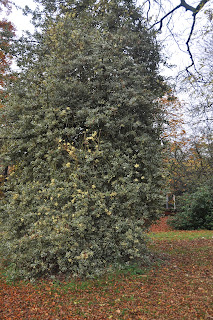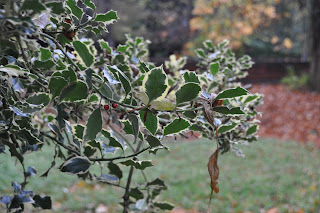Holly is an evergreen tree growing about 10-25 meters; holly can grow as a bush or into a vertical tree with one trunk. The leaves have 5 Sharp spines alternatively pointing up and down; these waxy evergreen leaves can last for a number of years.
The holly flowers bloom in May and June these flowers are pollinated by numerous bees and is a stable source of their food in these months. These then turn into red berries during the winter months which feed many birds, rodents and larger herbivores.
Holly is shade resistant and can grow underneath larger plants which were most plants can’t survive. This meaning that holly often grows in woodland and is associated with beech and oak trees.
Holly is a pioneer species which holds soil together and creating soil conditions that other plant species can colonise on. Holly prefers well drained neutral to slight acidic soil but can grow in most soils conditions except excess moisture.
This holly was found in Platt Fields park, not underneath but next to a number of beech trees, in very wet almost water logged conditions.



















